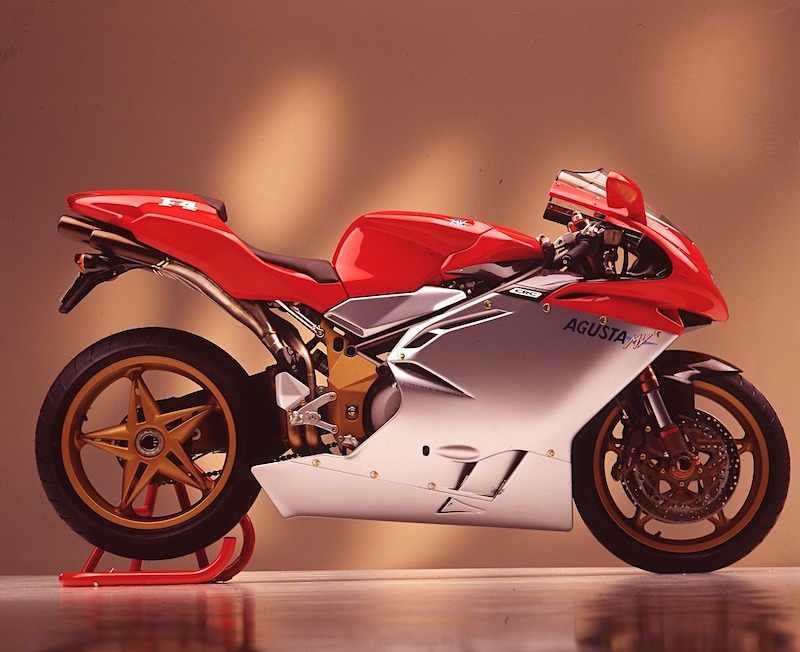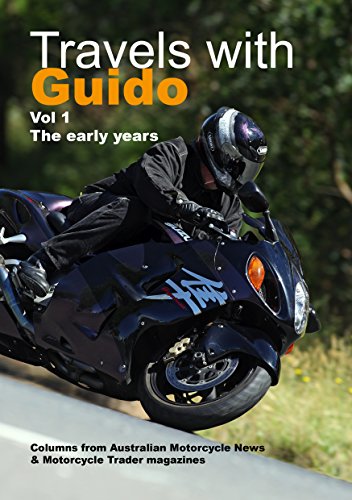Motorcycle Investor mag
Subscribe to our free email news
MV Agusta F4 serie Oro
(by Ian Falloon, Feb 2022)

Falloon on
the revival of the legendary MV Agusta marque
When MV Agusta closed
its doors in 1977 it signalled the death of Italy’s
premier motorcycle brand.
Between 1952 and 1976 MV won 37 world titles and took
270 Grand Prix victories,
an achievement unmatched at the time.
In 1978 Claudio and
Gianfranco Castiglioni of Cagiva took steps to acquire
the MV name but these
talks broke down. The factory was dismantled soon
afterwards and in 1982 the
company was placed into liquidation.
Things move slowly in
Italy and it wasn’t until a decade later, in the spring
of 1992, that the
Castiglionis finally managed to acquire MV Agusta. At
the time the Castiglionis
owned Cagiva, Ducati, Morini and Husqvarna, and operated
out of the old
AMF-Harley-Davidson Aermacchi premises at Schrianna on
shore of Lake Varese.
Massimo Tamburini ran
Cagiva’s design department, CRC (Cagiva Research
Centre), situated in San
Marino. Tamburini came to Cagiva from Bimota (the “Ta”
in Bimota), and by late
1992 was in the final stages of finishing the Ducati
916. But after the 916 was
finished Tamburini was ill with a stomach tumour and it
wasn’t until 1995 that
he could embark on the next production bike project; the
four-cylinder F4.
Andrea Goggi, an
engineer with Cagiva since 1988, was entrusted with
redesigning the liquid-cooled
F4 engine. With oversquare dimensions of 73.8 x 43.8mm
and a central
chain-drive for the double overhead camshafts, the
layout was unlike the
Japanese four-cylinder engines at the time that featured
side cam chain drives.
The cylinder block was
sand-cast as a separate entity, and inclined forward 20
degrees. This provided
near vertical 46mm throttle bodies for the Weber-Marelli
electronic fuel
injection. Another unusual feature was a reduction gear
driven off the
crankshaft that allowed smaller cam sprockets. This
reduced the size of the
cambox but the cams rotated backwards and required a
front-mounted cam chain
tensioner.
A unique feature was
the radial four-valve per cylinder layout. The included
valve angle was a
narrow 22 degrees, with the valves tilted outwards 2
degrees. The
cassette-style six-speed gearbox came from the 500cc
Cagiva Grand Prix racer,
the primary drive was by straight-cut gears and the
clutch a wet multiplate.
Tamburini designed the
4-2-1-2-4 exhaust system, with special emphasis on the
four rear exhaust pipes.
He wanted it to sound like music. “It looks like organ
pipes. Just like I love
listening to Pavarotti, I love listening to the engine,”
Tamburini said.
The pistons provided a
12:1 compression ratio and the 749.4cc four-cylinder
engine produced 126
horsepower at 12,200rpm.
Eschewing the popular
aluminium beam frame, Tamburini preferred a composite
chassis layout. This
included chrome-molybdenum tubular steel upper section
wrapping around the
narrow engine and bolting to cast magnesium rear
uprights. These doubled as an
engine cradle and pivots for the single-sided magnesium
swingarm.
Eccentrics on the
steering head bearings provided adjustable steering
geometry, while alternative
mounts for the Sachs shock absorber allowed a choice of
rising-rate.
The suspension, wheels
and brakes were all designed specifically for the F4.
The 49mm upside down
Showa fork incorporated quick release axle clamps and
the brakes were designed
in cooperation with Nissin. Along with 310mm floating
discs, the front calipers
featured six pistons of different diameter. At the rear
was a 210mm disc with
four-piston caliper.
Marvic supplied the
magnesium 3.50x17 and 6.00x17-inch wheels and Tamburini
commissioned Pirelli
supply a special 120/65ZR17 EVO front tyre to match the
190/50ZR17 rear.
Completing a rigid chassis specification were large
diameter axles, 35mm on the
front and 50mm on the rear.
The F4’s styling was
another Tamburini triumph. Following the example set by
the Ducati 916, the
small poly-ellipsoidal headlights dominated the frontal
aspect. The final
design placed the twin headlights one above another in
the centre of the
fairing. According to Tamburini, “Lights in the centre
are easier to control,
allow a more compact fairing and simplify homologation
around the world.”
Completing the
specification of the 184kg F4 750 Oro was carbon-fibre
bodywork, a transverse
Öhlins steering damper and adjustable (by eccentrics)
footpegs and levers.
Instrumentation was thoroughly modern, with a digital
speedometer and analogue
tachometer.
Rolling on a short 1398mm
wheelbase the F4 750 Oro promised exceptional agility
and stability, with a
claimed top speed of 275 km/h.
The F4 Oro was
initially unveiled at the Milan Show in September 1997
and appeared in the
Guggenheim exhibition The Art of
the Motorcycle at the end of 1998.
Production
of three a day commenced mid-1999 and by the end the
year delivery of the
limited edition run of the 300 pre-ordered examples was
complete.
Unfortunately, as it
took so long to develop by the time the F4 Oro was
released it was arguably
already obsolete. By 1999 the Japanese 750 fours were
lighter and more
powerful. But that didn’t worry prospective F4 Oro
buyers, most who would never
ride them.
Many Oros went into
the collections of celebrities, including King Juan
Carlos of Spain, Jay Leno,
Giacomo Agostini, and Max Biaggi. And while MV Agusta
has released many limited
editions since 1999, the F4 750 Oro stands alone.
The F4 Oro heralded MV
Agusta’s resurrection and is still the most collectable
of the new generation
MV Agustas.
-------------------------------------------------
Produced by AllMoto abn 61 400 694 722
Privacy: we do not collect cookies or any other data.

Archives
Contact





